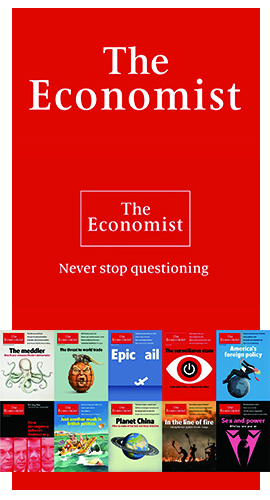
'Spaces of Reciprocity'
'互惠的空間'
'Spaces of Reciprocity' '互惠的空間' 是一項建築研究項目,旨在探索物質與數位科技之間的相互關係,以及它們如何開始透過觸發感知、理解和產生空間的替代方式。這項研究是為了挑戰西方建築實踐中的身體與環境的二元論,進而考慮基於人與自然之間的相互聯繫的東方原則,因此,研究是透過具體的人體經驗和對新技術和傳統工具的來參與推動進行的。

Jade Tang 今年畢業於英國皇家藝術學院建築研究所 Royal College of Art / School of Architecture Master of Arts (RIBA Part 2)。在她就讀於在Royal College of Art期間,她一直在探索感知現象和建築環境的替代方法。她一直對多學科方法感興趣。迄今為止,她的作品目前採用了多種媒介,尤其是聲音、運動圖像、表演和建築。Jade的作品強烈地受到親身體驗而推動,並與新技術和傳統建築工具進行了豐富的接觸,這使她能夠探索體驗的另類解讀,打破我們與空間的現有關係。
當人體暴露在其直接的環境中時,會經歷一系列不引人注意的變化,其中大多數都會被人們自己廣泛忽視。儘管這是一個積極的交流,但Jade Tang認為似乎越來越遠離我們的身體,以及它在空間中的重要性。隨著這種差距的不斷擴大。
因此,她在該畢業設計專案探索了物質和數位之間的相互關係,以及這些如何開始觸發對創造和感知空間的另一種理解。她透過以知名建築師Jorn Utzon於西班牙的建築設計項目“Can Lis”為主要研究對象,通過身體和技術手段的進行一系列的實驗,並透過電腦科技記錄下來,以通過電影記錄和探索。
註: “Can Lis” 是丹麥建築師JørnUtzon在西班牙馬略卡島上的Portopetro附近為他的妻子Lis和他自己建造的房屋。 它於1971年完工,由四個獨立的街區組成,這些街區通過牆壁和庭院相連。
通過三種場景的設計、GESTURE 1: Shìjué/Sight、GESTURE 2: Tīngjué/ Sound、GESTURE 3: Qi/Air,這三種視角之間的相互作用瞬間被具體化了,為了想像一個“其他”建築是如何通過這些身體和技術之間的相遇而出現的。在此過程中,他們挑戰了西方的身體環境二元論,轉而考慮基於人與自然之間相互聯繫的東方原則,尤其是質疑諸如形式、迴圈和氛圍等概念。這些替代方案允許我們推測的覆議眼經驗,聽覺感知和情感有可能重塑我們的關係對環境和人類的身體,把建築作為一個基本工具。這個項目由3個動作組成。
GESTURE 1: Shìjué/Sight
位於Can Lis下面的洞穴裡。這個 GESTURE 1探索了兩種觀看方式之間的相互聯繫: 數位掃描技術和視覺體驗。它考慮了表演製造作為一種即時設計方法的潛力,它包含了技術、身體和場所之間的一個相互關聯的網路,挑戰了西方身體環境的二元論在形式的產生。
GESTURE 1: Shìjué/Sight, is situated in the cave beneath Can Lis. This gesture explores the reciprocities between two ways of seeing: digital scanning technology and ocular experience. It considers the potential of performative fabrication as a real-time design method that consists of an interrelated network between technology, body and place, challenging Western body-environment dualism in the generation of form.




GESTURE 2: Tīngjué/ Sound
位於坎利斯(Can Lis)的起居室裡,探索雙耳錄音技術與現場聽覺體驗之間的相互關係,並質疑流通觀念。 它質疑如何將這種聲音構造方法用作一種實時的集體設計工具,該工具考慮了場地,技術和身體之間的共存,從而使我們重新與地球的節奏和聲音狀況聯繫起來。
GESTURE 2: Tīngjué/ Sound, is situated in the Living room of Can Lis and explores the reciprocities between binaural recording technology and live aural experience, questioning ideas of circulation. It questions how this method of sonic construction can be employed as a real-time collective design tool that considers a coexistence between site, technology and the body, reconnecting us to the rhythms and sonic condition of the earth.




Gesture 2, 位於Can Lis的起居室,探索雙耳錄音技術與現場聽覺體驗之間的對等關係,質疑流通的觀念。通過沉浸式3D音景體驗的設計來實現和執行這兩種聆聽方式,要求觀看者通過行走做出響應。在體驗期間,表演者會遇到各種干擾時刻,因為數字聲景會疊加到他們的周圍環境中。這些時刻使每個參與者都可以定義自己在空間中的路徑,從而創造出一個完全獨特的響應,該響應取決於時間,解釋,重要性和位置。
位置和構造的這種重疊打破了提議和實現的舞台與屏幕之間的區別。它質疑如何將這種聲音構造方法用作一種實時的集體設計工具,該工具可以考慮場地,技術和身體之間的共存,從而使我們重新與地球的節奏和聲音狀況聯繫起來。
Gesture 2, is situated in the Living room of Can Lis and explores the reciprocities between binaural recording technology and live aural experience, questioning ideas of circulation. These two ways of listening are materialised and performed through the design of an immersive 3d soundscape experience, asking viewers to respond through walking. During the experience, performers encounter various moments of interference, as the digital soundscape is superimposed onto their immediate environment. These moments allow each participant to define their own path through space, creating an entirely unique response that is dependent on time, interpretation, materiality and place.
This overlapping of the situated and the constructed breaks down the distinction between the stage and the screen proposed and realised. It questions how this method of sonic construction can be used as a real-time collective design tool that considers a coexistence between site, technology and the body, reconnecting us to the rhythms and sonic condition of the earth.
GESTURE 3: Qi/Air
位於天文台中,探索兩種情感表達之間的相互關係:脈搏和呼吸。 通過電影記錄和實現了這兩種表達形式,探索了將情感作為探索環境的材料的潛力。
GESTURE 3: Qi/Air, is situated in the observatory and explores the reciprocities between two expressions of emotion: the pulse and breath. These two forms of expression, are documented and materialised through film, exploring the potential of using emotion as a material to explore ambience.





Observatory Film Still
Gesture 3 位於天文台中,探索兩種情感表達之間的相互關係:脈搏和呼吸,這兩者都是對周圍環境的隱形響應。 通過電影記錄和實現了這兩種表達形式,探索了將情感作為探索環境的材料的潛力。
英國皇家藝術學院建築研究所 2018-2020
Royal College of Art / School of Architecture
Master of Arts (RIBA Part 2)
SPACES OF RECIPROCITY[GESTURE 1 - GESTURE 2 - GESTURE 3]
Film footage in Can Lis also shot as part of Lys Uden Sol








沒有留言:
張貼留言